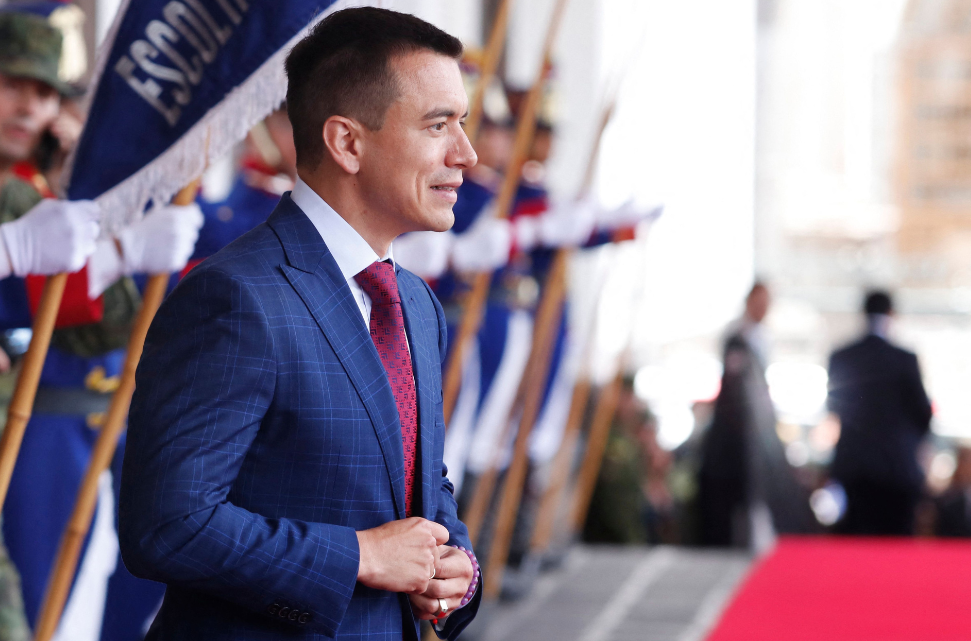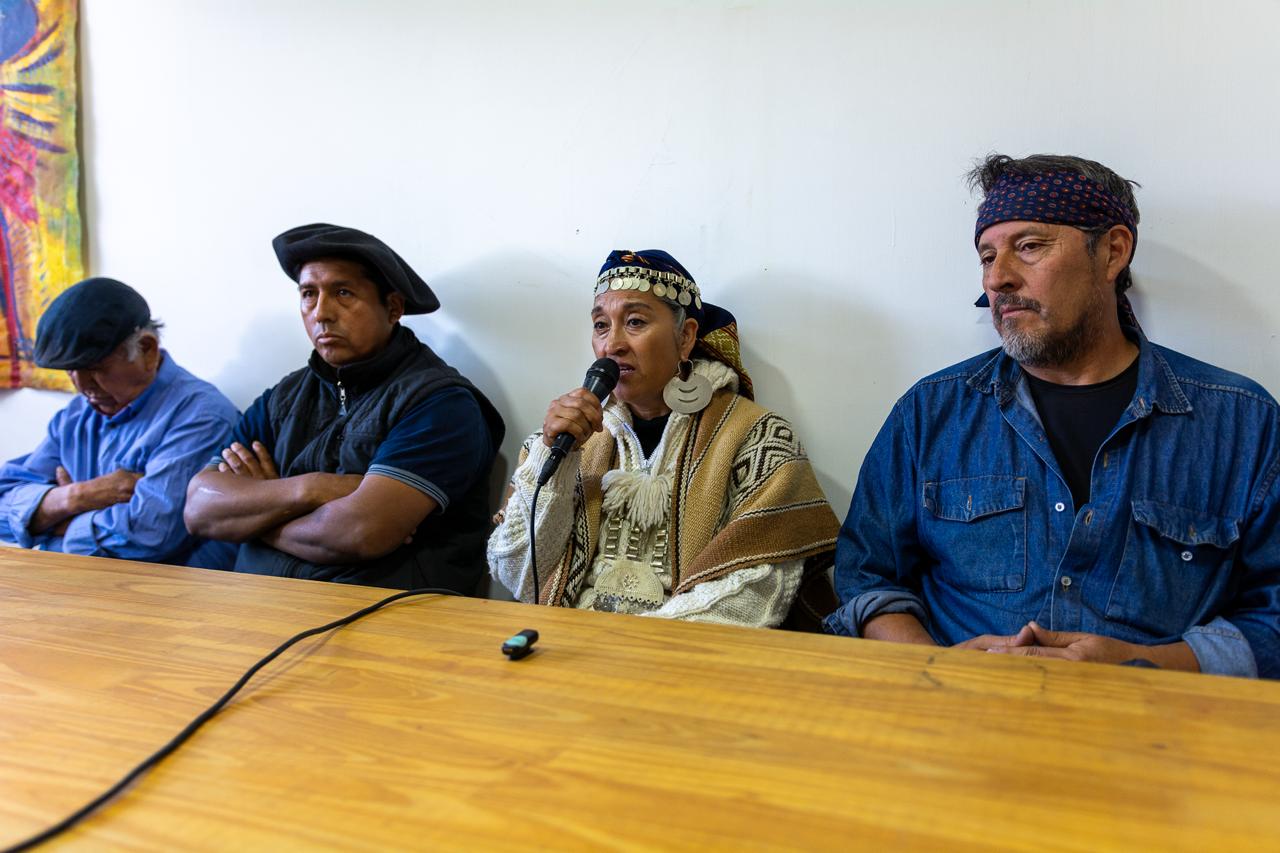[ printer-friendly
PDF version ]
The Military Coup in Venezuela
by Margarita Lopez Maya,
Luis Lander, and Edgardo Lander | April 17, 2002
This commentary was originally commissioned
and distributed by the joint IRC-IPS Foreign Policy in Focus (FPIF) project. It
is reproduced here courtesy of FPIF. Foreign Policy in Focus–"A Think Tank
Without Walls"–can be accessed online at www.fpif.org .
The events leading up to the April 11 military coup against Venezuelan President Hugo Chavez can be traced back to the worsening political climate evident since the end of last year. The conflict between forces loyal to President Hugo Chavez and those opposed to him heated up particularly after November 2001, when Chavez, using new powers granted him by the National Assembly, passed 49 laws, some of which were extremely controversial–such as the Land Law and the Organic Law of Liquid Hydrocarbons. Each of these laws was annulled on Friday, less than twenty-four hours after Chavez was ousted from power by the military in alliance with business elites and the top managers of Petroleos de Venezuela (Pdvsa), the state-owned oil company.
The opposition to Chavez, led by the Federation of Chambers of Industry and
Commerce (Fedecamaras) and the top managers of Pdvsa, became increasingly active,
organizing civic strikes, protest marches, and other activities. The demand that
Chavez resign immediately became the clarion call of these mobilizations.
The opposition activities were met by the government and its supporters with
counterdemonstrations, leading to an alarming degree of tension, which threatened
to degenerate into violence on more than one occasion. However, prior to the week
before the coup, the acts of violence registered in the demonstrations of both
government supporters and opponents–verbal assaults aside–were few and far between.
After Chavez appointed a new president and board of directors to Pdvsa, the
opposition adopted more strident measures against the government, culminating
in a general strike. The strike was organized jointly by Fedecamaras and a group
of trade unionists who had assumed leadership of the Confederation of Venezuelan
Workers (CTV) after elections that were characterized by numerous irregularities.
The general strike served as the platform for the military coup of April 11.
The strike was widely seen as less than a resounding success. On April 11,
the CTV and Fedecamaras decided to lead the protesters through eastern Caracas
to the Pdvsa offices in Chuao. Once they arrived, emboldened by the large number
of followers, Carlos Ortega, the contested president of the CTV, urged the protesters
to march toward the Miraflores Palace, the seat of the national government, with
the express purpose of "removing Chavez from office." In the three years
of Chavez’s government, government supporters have frequently mobilized around
the government palace to demonstrate their support.
That day, as had been the case since the strike began, Chavez supporters had
turned out in massive numbers at the government palace. Ortega’s intention of
inciting a violent confrontation was evident; violence did in fact occur and several
people were killed and wounded by gunfire. According to the media versions of
what happened, those responsible were either pro-Chavez sharpshooters or members
of the National Guard. However, several of those who were killed by gunfire, including
the Vice President’s chauffeur, were government supporters. As events unfolded,
President Chavez was making a public statement; immediately after he finished,
several opposition politicians appeared on television, openly and aggressively
calling on the armed forces to intervene and remove Chavez. Jose Rodriguez Iturbe,
a leading member of the Copei political party and who on the next day was named
chancellor of the new government, harangued the armed forces, accusing them of
cowardice if they did not act to remove Chavez. Around 10pm the state-owned TV
channel went off the air; and shortly thereafter a top military official, echoing
opposition accusations that Chavez supporters had massacred peaceful protesters,
began to publicly declare that the military no longer recognized Chavez as president.
At 1:20am it was announced that Chavez had resigned and, a few hours later, that
the president of Fedecamaras, Pedro Carmona Estanga, would assume the presidency
of a transition government.
This was clearly a military coup that has been in the making for some time,
with the help of Democratic Action (AD), business elites, trade unionists, the
top leadership of Pdvsa, and, most likely, with the support or at least the tacit
approval of the U.S. embassy. It is probably not a coincidence Charles Shapiro,
the new U.S. ambassador–who has experience in counterinsurgency operations–arrived
in Caracas just days before the coup.
The authoritarian, illegal, and illegitimate nature of the new government was
evident with the closure of public institutions that operated under the existing
constitution. The National Assembly was shut down, as were the Attorney General’s
office, the Supreme Court, the Comptroller’s office, the National Electoral Board,
and the Ombudsman’s office. This closure of these democratic institutions was
a clear manifestation of authoritarianism.
The media, and particularly television, were the main instruments of the military
coup. It is obvious that a healthy democracy cannot exist without a democratic
media. In Venezuela, the media has acted wholeheartedly in defense of the interests
of big business and of a particular vision of the country articulated by so-called
"civil society," the term that middle class groups opposed to the Chavez
government use to refer to themselves. The media launched a systematic campaign
to undermine the Chavez government, presenting biased information.
On April 12, the Attorney General, who was in hiding, made a public statement
explaining in detail how the military coup violated the constitution. He affirmed
that President Chavez did not resign. If he had done so, then according to the
constitution the vice president would assume the presidency. If the vice president
were to resign, then the president of the National Assembly would assume the presidency.
The events of April 11, therefore, represented a clear rupture of this constitutional
order.
The security forces started raiding offices of pro-Chavez supporters and arresting
mayors and governors linked to his movement. These, like Chavez, had been freely
elected. Several ministers and deputies of the National Assembly were detained
without any legal process for the "crime" of being members of the deposed
government. Members of the government and the National Assembly struggled to communicate
with the country and the media, but the media ignored them.
At 4am on April 12 Chavez was detained and transferred to the Tiuna Fortress,
and in the subsequent thirty-eight hours he was moved to four different locations.
No one was permitted to see him, including the Attorney General and local human
rights organizations. Every time they had an opportunity, individuals close to
Chavez affirmed that he had neither resigned nor had he dismissed anyone. The
lives of the men and women linked to his government and his political movement
were at risk. The vigilance of the international community became crucial.
Unlike the declarations given on April 12 by the White House spokesperson,
who reiterated the Venezuelan media’s version of events, some Latin American and
European governments recognized that this was a military coup and they repudiated
it. The U.S. government failed to demonstrate its commitment to democracy. After
countries such as Mexico or Argentina rejected this act of force, the majority
of Latin American nations followed suit and withheld recognition of the interim
government. On the morning of Saturday April 13, U.S. Ambassador Shapiro met with
Pedro Carmona Estanga in the Miraflores Palace for an hour. Referring to Carmona
as the "president," he refused to make public the nature of their conversation,
but the meeting carried significant symbolic weight. Was the United States seeking
ways to make the de facto interim government palatable to its neighbors and to
the world?
Since the afternoon of the 12th, Caracas and other cities throughout Venezuela
witnessed massive street protests in support of President Chavez. These protests
grew larger throughout the day on Saturday. International pressure, divisions
among the anti-Chavez groups, and the military uprisings in support of Chavez
in several garrisons throughout the country signaled the coup’s lack of public
support. In the afternoon, the army commander made a public announcement that
conditioned the army’s support of the transitional government on a series of points,
unleashing the events that ultimately led to the renunciation of Carmona Estanga
and the return of Hugo Chavez to the presidency.
Now that constitutional order has been reinstated, Venezuela faces dramatic
challenges. The polarization that led to the events of the past several days lingers
in the air. Upon his return, Chavez has made statements seeking reconciliation
among all Venezuelans. The country’s future depends on the lessons that the president
and the opposition draw from this unfortunate experience.
(Margarita López Maya is a historian and professor at the Universidad
Central de Venezuela. Luis E. Lander is an engineer and professor at the Universidad
Central de Venezuela. Edgardo Lander is a sociologist and professor at the Universidad
Central de Venezuela.)
Join our network to receive email announcements that tell you when new items like this article are posted to the Americas Program website. Information on our privacy policy is available on our network sign-up page.
Distributed by the Americas
Program at the Interhemispheric Resource Center (IRC). Originally published by
the joint IRC-IPS Foreign Policy In Focus project. ©2002. All rights reserved.
Recommended citation:
Margarita Lopez Maya, Luis Lander, and Edgardo Lander, "The Military Coup
in Venezuela," Global Affairs Commentary, Foreign Policy In Focus (Silver
City, NM: Interhemispheric Resource Center, April 17, 2002).
Web location:
http://www.americaspolicy.org/commentary/2002/0204venez1.html



